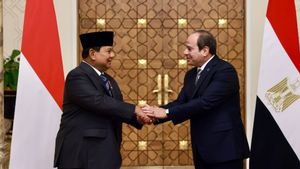JAKARTA - Two men blew themselves up in a crowded market in the Baghdad area, Thursday, January 21. The explosion killed at least 32 people.
Authorities described the first major suicide bombings in Iraq in three years as a sign that ISIS was active again. Reuters journalists, who arrived at the scene after the explosion occurred, saw pools of blood and shoes scattered on a clothing market on Tayaran Square in the city center. Health authorities said at least 110 people were injured.
"One (bomber) came, fell to the ground and started complaining 'my stomach hurts' and he pressed the detonator in his hand. It immediately exploded. People were torn apart," said a street vendor who asked not to be named.
The suicide attacks, which used to take place on an almost daily basis in the Iraqi capital, have been successfully stopped in recent years since ISIS was defeated in 2017. The absence of attacks is part of an overall security buildup that has brought normal life back to Baghdad.
"The ISIS terrorist group may be behind the attack," Civil Defense chief Maj. Gen. Kadhim Salman told reporters.
A video, taken from the roof and circulating on social media, appears to show a second explosion falling on people gathered in the area. The images shared online, which Reuters could not independently verify, showed several people dead and injured.
Iraqi security forces were deployed and main roads blocked to prevent possible further attacks. Thursday's attack took place in the same market as the last major attack in January 2018. At that time, 27 people were killed.
Prime Minister Mustafa al-Kadhimi held a meeting with top security commanders to discuss Thursday's attack, the prime minister's office said in a brief statement.
Following the meeting, Kadhimi sacked the chief security and police commander, deputy interior minister for intelligence affairs, director of counter terrorism and intelligence at the interior ministry, and commander of the federal police force, a military spokesman said in a statement.
Suicide attacks on civilian targets were a tactic by Sunni Muslim rebels during the US occupation of Iraq following the invasion that toppled Saddam Hussein in 2003, and then used by ISIS, which controlled a third of the country in 2014.
In 2017, ISIS fighters were driven from all areas they control, although they continue to carry out small attacks on Iraqi forces and attack a number of officials, especially in the north.
The English, Chinese, Japanese, Arabic, and French versions are automatically generated by the AI. So there may still be inaccuracies in translating, please always see Indonesian as our main language. (system supported by DigitalSiber.id)













